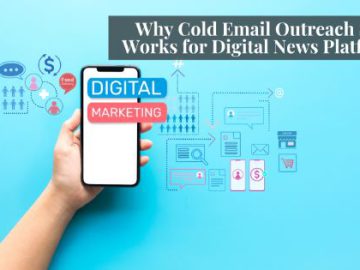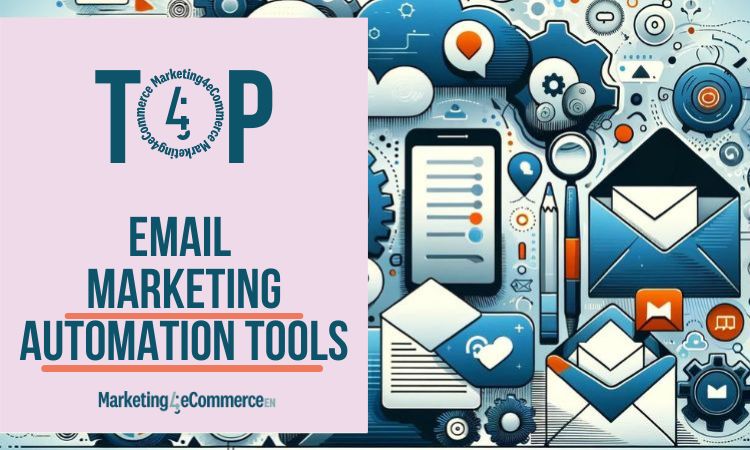The Gist
- AI vs. human touch. Relying solely on AI in email marketing can lead to generic content and missed emotional nuances. Combining AI with human oversight helps maintain personalization and effectiveness.
- Automation efficiency risks. While AI streamlines email tasks, overreliance may result in impersonal communication and misaligned CTAs. A hybrid approach balances automation with human creativity.
- Balancing AI use. Integrating AI with human insight improves email marketing outcomes by leveraging data efficiency while retaining the emotional depth needed for engagement.
In the race to automate every aspect of marketing, artificial intelligence (AI) has become the go-to solution for efficiency-driven email marketers. With sophisticated email marketing tools and email automation software, it’s easier than ever to scale email campaigns and reach vast audiences with personalized marketing emails.
However, as more companies fully entrust their email marketing strategy to AI tools, are they overlooking the potential risks that could undermine their efforts? From misaligned product recommendations to impersonal email copy, relying solely on AI in email marketing might silently erode the human touch that truly resonates with your target audience.
The Rise of AI in Email Marketing
AI has dramatically transformed email marketing in recent years. Email marketers now leverage AI tools to analyze customer data, segment email lists, optimize email deliverability and generate subject lines using natural language generation. These tools can predict the right time to send emails, create personalized product recommendations and automatically craft email content that seems tailor-made for each recipient.
While these AI-powered capabilities offer significant advantages — such as enhanced email performance, real-time analytics and improved customer experience — there’s a growing concern that the human element may get lost in translation. When marketing teams rely too much on AI for crafting and delivering marketing emails, they risk missing critical nuances in customer behavior and user engagement that can only be understood through human insight.
Related Article: The Email Marketing Trends That Are Seeing Adoption & Success
The Risks of Fully Relying on AI in Email Marketing
1. Content Automation Pitfalls
AI can generate content quickly, but it’s not always perfect. One of the biggest pitfalls of relying solely on AI in email marketing is the risk of sending out generic or incorrect email copy. AI tools are excellent at analyzing email data and user behavior but sometimes misinterpret the context, leading to irrelevant or erroneous messages.
For example, AI might recommend a product to a customer based on previous purchases. But without human oversight, it might miss that the customer already owns the product. Additionally, while AI-generated content may be technically accurate, it often lacks the emotional depth and creative flair that resonate with recipients on a personal level. Imagine a subject line generator that outputs a technically sound but uninspiring phrase — would that engage your audience?
2. Missing AI and Human Collaboration
The best email marketing strategies balance automation with human creativity. While AI can handle the mechanics — such as segmenting your email list and optimizing email deliverability — it struggles to replicate the empathy and emotional intelligence needed to forge genuine connections with customers.
When marketing emails become too robotic or impersonal, they risk alienating the very audience they’re meant to engage. Customers today are savvy. They can tell when an email lacks the warmth of human interaction. This can lead to lower open rates, decreased brand awareness and diminished customer loyalty. The user behavior that AI tracks often lacks the subtle cues that a human marketer would notice, such as tone, context and sentiment — elements critical for truly personalized communication.
3. Misaligned CTAs and Product Recommendations
Calls to action (CTAs) are critical in guiding your audience toward conversions. However, AI-driven email campaigns can sometimes misalign CTAs or make inaccurate product recommendations, confusing or frustrating recipients. For example, an AI tool might suggest a “Buy Now” button for a customer still in the research phase or recommend a product the customer has already purchased.
View all
In such cases, lacking human oversight can result in missed opportunities and even damage customer trust. While AI is excellent at processing vast amounts of customer data in real time, it often requires human intervention to ensure that the actions it suggests are appropriate and effective for the target audience.
Is AI-Driven Marketing Sacrificing Personalization and ROI for Efficiency?
As the trend of non-human, AI-driven marketing grows, it’s essential to consider the broader impact on business outcomes. Although AI can improve efficiency, data from Gartner suggests that by 2025, 80% of marketers who have invested in AI-driven personalization will abandon their efforts due to issues like poor ROI or challenges related to data privacy.
Additionally, Salesforce reports that while 62% of customers expect companies to adapt to their actions and behaviors, only 47% feel that brands are meeting this expectation. This indicates that while AI technology can be powerful, it often falls short when delivering the personalized, human-centered experiences that customers crave.
Related Article: The Unforeseen Consequences of Relying on AI in Marketing Strategies
The Case for a Hybrid Approach
1. Combine AI and Human Expertise
The solution isn’t to abandon AI in email marketing but to strike the right balance between automation and human control. A hybrid approach allows businesses to leverage the power of AI for tasks they excel at — such as analyzing customer data, optimizing send times and automating repetitive tasks — while human marketers focus on the creative and strategic elements that drive engagement and brand loyalty.
For example, let AI manage your email list segmentation and suggest content ideas based on customer behavior. However, have a human finalize the email copy and CTAs to ensure they align with your brand’s voice and objectives. This enhances email performance and ensures that your messages resonate more personally.
2. Maintain Human Oversight
Human oversight is crucial in maintaining the quality and effectiveness of AI-driven email campaigns. Regular reviews of AI-generated content can catch errors, refine messaging and ensure that your marketing efforts align with your business objectives. Moreover, human intervention allows for dynamic adjustments based on real-time feedback, something AI still struggles to accomplish with all its advancements.
3. Automate Smartly
The key is to automate strategically. Focus on automating data-heavy and time-consuming tasks while maintaining human involvement in areas that require emotional intelligence and creativity. For example, while AI can handle A/B testing, timing optimization and content suggestions, human marketers should oversee final approvals, craft personalized messages and fine-tune CTAs.
The Power of Combining AI and Human Insight in Marketing
While AI in email marketing offers numerous benefits, relying entirely on email automation tools can lead to significant risks, such as impersonal communication, misaligned CTAs and generic content. A hybrid approach that combines AI’s efficiency with the human touch can help businesses achieve better results, drive customer engagement and enhance the overall customer experience.
Before letting AI take complete control, consider how integrating human insight with AI-driven tools can lead to a more balanced, effective email marketing strategy that scales efficiently and resonates deeply with your audience.
Learn how you can join our contributor community.



